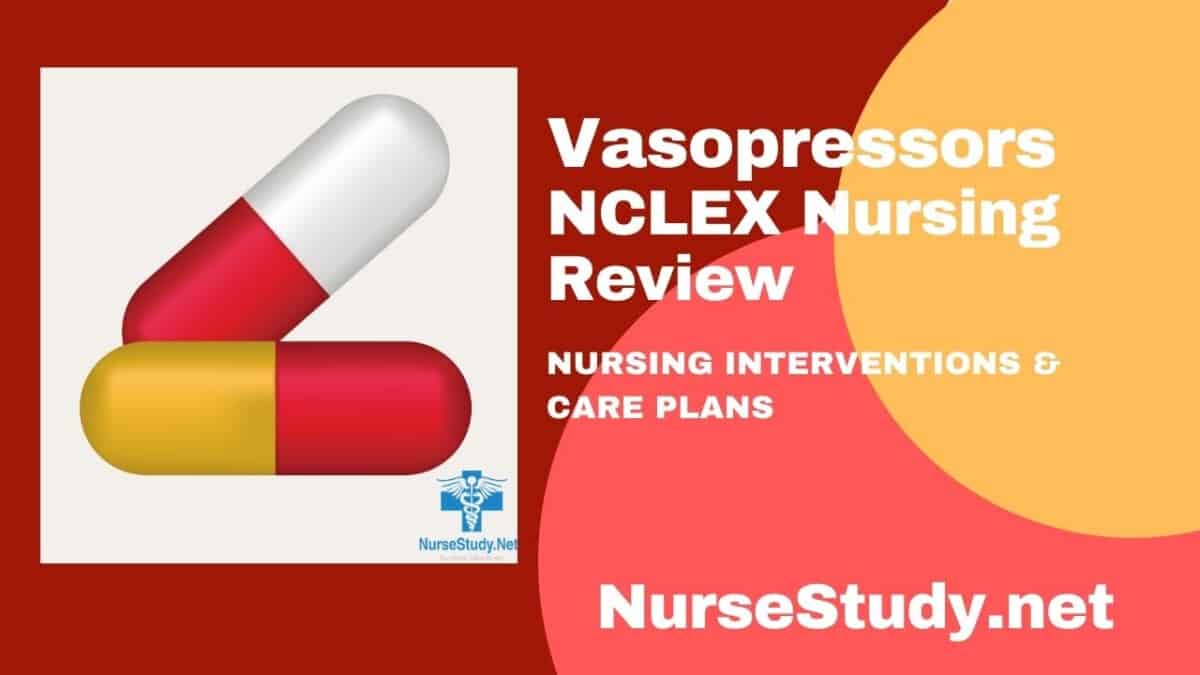Vasopressors are powerful medications used in critical care settings to treat severe hypotension and shock. These drugs increase blood pressure by causing vasoconstriction and improving cardiac output.
Generic names: Norepinephrine, Epinephrine, Vasopressin, Phenylephrine, Dopamine
Brand names: Levophed (norepinephrine), Adrenalin (epinephrine), Pitressin (vasopressin), Neo-Synephrine (phenylephrine), Intropin (dopamine)
Pharmacologic class: Sympathomimetic amines, hormones
Therapeutic class: Vasopressors, inotropes
Mechanism of action: Vasopressors work by stimulating alpha and beta-adrenergic receptors, leading to vasoconstriction and increased cardiac contractility. This results in improved blood pressure and tissue perfusion.
Indications for use: Hypotension unresponsive to fluid resuscitation, cardiogenic shock, septic shock, neurogenic shock, anaphylactic shock, cardiac arrest.
Precautions and contraindications: Hypovolemia must be corrected before initiating vasopressors. Use with caution in patients with peripheral vascular disease, coronary artery disease, or arrhythmias.
Drug Interactions
- Beta-blockers may decrease the effectiveness of vasopressors
- MAO inhibitors can potentiate effects and cause severe hypertension
- Tricyclic antidepressants may enhance cardiovascular effects
- Ergot alkaloids increase the risk of peripheral ischemia
Adverse Effects
- Tissue ischemia and necrosis from extravasation
- Arrhythmias and tachycardia
- Severe hypertension
- Anxiety and restlessness
- Headache and tremors
- Nausea and vomiting
- Decreased urine output
- Hyperglycemia
Administration Considerations
Available preparations: Injectable solutions for continuous IV infusion
Administration: This must be done through a central line. Peripheral IV administration risks tissue necrosis from extravasation.
Duration: Continuous infusion with frequent dose adjustments based on patient response
Nursing Considerations for Vasopressors
Related Nursing Diagnoses
- Decreased cardiac output
- Risk for Ineffective peripheral tissue perfusion
- Risk for unstable blood pressure
- Anxiety related to critical illness
- Risk for fluid volume deficit
Nursing Assessment
- Continuous monitoring of vital signs, especially blood pressure and heart rate
- Assess mental status and level of consciousness
- Monitor cardiac rhythm and hemodynamic parameters
- Check peripheral pulses and tissue perfusion
- Monitor IV site for signs of extravasation
- Assess urine output and kidney function
- Monitor blood glucose levels
- Evaluate for signs of anxiety or agitation
Nursing Interventions
- Ensure central line placement and patency before administration
- Use infusion pumps with appropriate safety features
- Maintain accurate intake and output records
- Implement extravasation protocol if needed
- Monitor and document hemodynamic response
- Keep emergency equipment readily available
- Label all lines and connections clearly
- Maintain crash cart accessibility
Patient Teaching Associated with Vasopressors
- Explain the purpose and importance of continuous monitoring
- Instruct patient to report any pain or burning at IV site
- Educate about the need for restricted movement to maintain line placement
- Explain the meaning of various monitor alarms
- Discuss expected outcomes and treatment goals
- Address anxiety related to critical illness
- Provide family education about equipment and monitoring
Specific Considerations for Common Vasopressors
Norepinephrine (Levophed)
- First-line agent for septic shock
- Monitor for bradycardia and peripheral vasoconstriction
- Protect from light during administration
Epinephrine
- Preferred in anaphylactic shock and cardiac arrest
- Watch for tachyarrhythmias and myocardial ischemia
- Monitor blood glucose closely
Vasopressin
- Often used as an adjunct to other vasopressors
- Monitor for hyponatremia and fluid retention
- Watch for digital ischemia
Phenylephrine
- Pure alpha-agonist with less chronotropic effects
- Beneficial in patients with tachyarrhythmias
- Monitor for reflex bradycardia
This is not an all-inclusive list of possible drug interactions, adverse effects, precautions, nursing considerations, or patient instructions. Please consult further with a pharmacist for complete information.
References
- Avni T, Lador A, Lev S, Leibovici L, Paul M, Grossman A. Vasopressors for the Treatment of Septic Shock: Systematic Review and Meta-Analysis. PLoS One. 2015 Aug 3;10(8):e0129305. doi: 10.1371/journal.pone.0129305. PMID: 26237037; PMCID: PMC4523170.
- Belletti A, Benedetto U, Biondi-Zoccai G, Leggieri C, Silvani P, Angelini GD, Zangrillo A, Landoni G. The effect of vasoactive drugs on mortality in patients with severe sepsis and septic shock. A network meta-analysis of randomized trials. J Crit Care. 2017 Feb;37:91-98. doi: 10.1016/j.jcrc.2016.08.010. Epub 2016 Aug 13. PMID: 27660923.
- Jentzer JC, Hollenberg SM. Vasopressor and Inotrope Therapy in Cardiac Critical Care. J Intensive Care Med. 2021 Aug;36(8):843-856. doi: 10.1177/0885066620917630. Epub 2020 Apr 13. PMID: 32281470.
- Russell JA, Lee T, Singer J, De Backer D, Annane D. Days alive and free as an alternative to a mortality outcome in pivotal vasopressor and septic shock trials. J Crit Care. 2018 Oct;47:333-337. doi: 10.1016/j.jcrc.2018.05.003. Epub 2018 May 12. PMID: 29958734.
- Russell JA, Gordon AC, Williams MD, Boyd JH, Walley KR, Kissoon N. Vasopressor Therapy in the Intensive Care Unit. Semin Respir Crit Care Med. 2021 Feb;42(1):59-77. doi: 10.1055/s-0040-1710320. Epub 2020 Aug 20. PMID: 32820475.
- Rhodes, A., & Evans, L. E. (2024). Surviving Sepsis Campaign: International Guidelines for Management of Sepsis and Septic Shock. Critical Care Medicine, 49(4), e225-e262.
